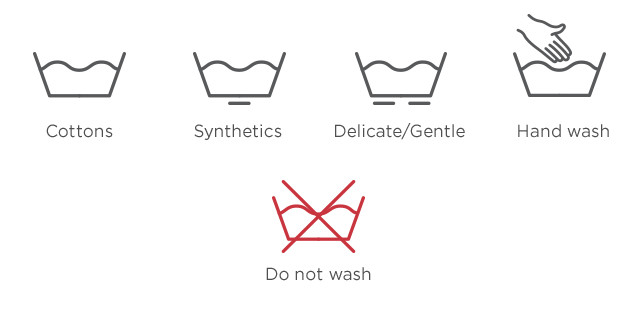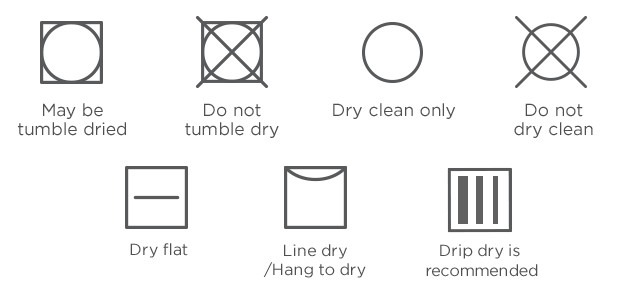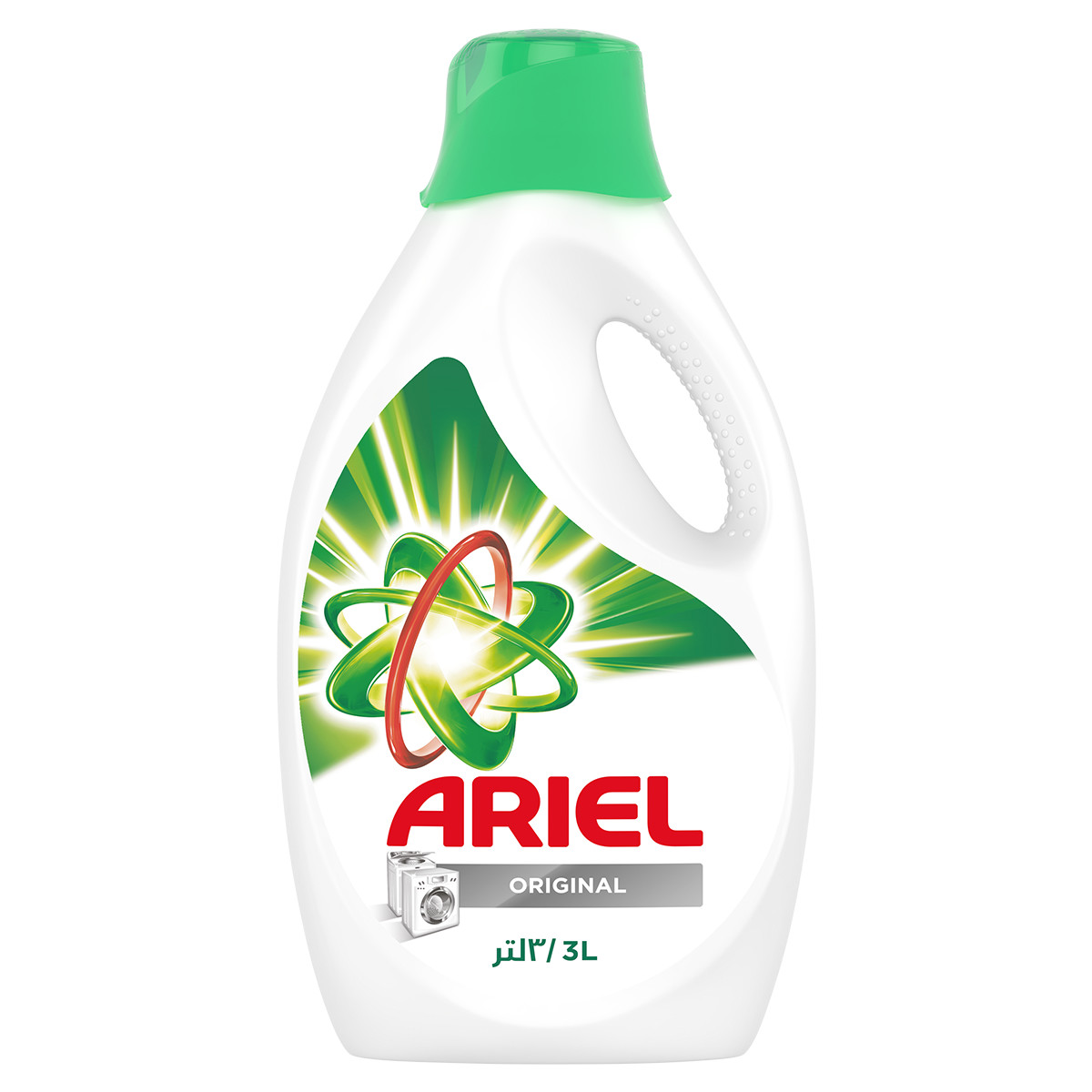The world of laundry may seem like an alien planet, with laundry symbols being the language of its inhabitants.
At first they may appear confusing, but with a little help from Ariel, reading the washing instructions will be just as easy as ABC. Each clothing label should tell you what the fabric is made from, and should include up to five washing symbols that let you know how to properly care for it. Here’s our essential guide on washing machine symbols, taking you through all the important steps of laundry care.
Download our washing machine symbols guide and put it on the wall of your laundry room so that you can give your clothes the care that they deserve!
Basic washing instruction symbols on clothing labels
This group of symbols, generally depicted as a bucket filled with water (save for the “Do not wring” symbol) helps you decide if your piece of clothing is safe to wash in your washing machine, and if so, on what setting, or if it needs to be treated more delicately. If you see the “Do not wash” symbol (a crossed out bucket filled with water) on the fabric care label, that means the garment can’t be safely laundered by any process, and instead needs to be dry cleaned with a solvent.

Water Temperature symbols on clothing labels
Water temperature can be depicted on the care label of your garment in two ways: either with a dot, or with numbers, found inside a bucket filled with water. One dot equals 30 C and means you have to wash your clothing in cold water, whereas two dots equal 40 C, which means you’ll need a warm wash, and if you see four dots you should not wash on water temperature exceeding 60 C.

Bleaching guidelines on clothing labels
In case your whites don’t shine like they used to, you may want to consider using non-chlorine bleach. Before you do that, however, it’s worth taking a look at the label’s bleach symbol, represented by a triangle, to find out if your garment can handle bleaching agents.

Drying guidelines on clothing labels
Your clothes may be out of the washing machine, but they’re still not ready to wear yet: the dripping wet garments first need to be properly dried. The following symbols will let you know how to dry your garments without causing any damage to the fabric. These symbols (resembling an actual tumble dryer) will tell you if you can safely tumble dry your garments, or if they’re better off drying on a flat surface or hanging from a clothes line. The dry cleaning symbol is a circle, while the tumble drier is represented by a square with a circle inside.

Tumble Dry Setting symbols on clothing labels
If the label allows for your garment to be tumble dried, the most important thing to decide is which heat setting to use. The number of dots inside the circle will tell you on which heat setting to use your tumble dryer for that specific garment.

Ironing symbols on clothing labels
The ironing symbols come in five different versions: the dots represent the temperature that you should use to iron the garment on, while the cross means that the garment isn’t suitable for ironing. The fifth symbol, depicting an iron with the steam crossed out, means that steaming is not allowed.

Dry Cleaning symbols on clothing labels
Sometimes, it’s best that you let a professional take care of your special garment: that’s when dry cleaning comes into the picture. These symbols will help you decide whether or not your piece of clothing can be dry cleaned, and if so, what solvent to use.

Related articles
How to wash and care for silk clothes
Few fabrics feel as luxurious as silk, and you might be surprised to find that dry cleaning may not be your only option for washing them. Check out the silk basics guide below.
How to wash down coats and bedding
Must-know moves to keep your feathery friends fluffy and snuggly. Whether you have down-filled comforters, sleeping bags, winter jackets, pillows, or all of these, the right cleaning steps will ensure they stay silky soft and freshly scented.
4 myths about caring for denim
Jeans demand special care to endure They may be the most comfortable clothes you own, but are you taking care of them properly? Here, we will bust four of the most common misconceptions about this true-blue fabric.


